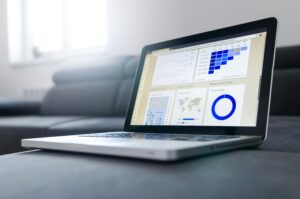54% of Americans get their health insurance through their job.
We’ve normalized that stat. Built around it. Budgeted for it.
For most businesses, offering health insurance feels like table stakes. For some, it’s a recruiting tool. For others, it’s a part of the culture for their team. But for nearly every employer I’ve spoken to, especially the ones building something from nothing, it’s an administrative weight they never expected to carry.
This isn’t an article about policy. It’s about people. Founders, operators, people who already wear many hats, and somehow end up in charge of navigating the most bloated, bureaucratic, and expensive system in the country.
Let’s unpack how we got here, why it’s breaking, and how the role of the employer is beginning to evolve.
How We Got Here: A Fix That Froze
The roots of employer sponsored insurance goes all the way back to World War II. During the wartime wage freeze, companies needed another way to compete for the best workers. The workaround was to offer health insurance.
In 1943, the IRS ruled that health benefits wouldn’t count as taxable income. And in 1954, that decision was baked into the tax code. What started as a clever workaround turned into the default system. Once group coverage gave employers negotiating power with the carriers, it stuck.
The intention was never to put employers in charge of healthcare. But here we are.
The Weight Employers Carry Today
Most people assume the company just “covers insurance.” But beneath the surface is a knot of costs, complexity, and compliance that business owners, especially small ones, are left to untangle.
- Premiums rise every year. Sometimes 10%. Sometimes 15%. Rarely with explanation.
- Regulations evolve constantly. ACA compliance, state mandates, ERISA, COBRA, the list of confusing acronyms is long.
- Teams burn out. For many startups or family owned businesses, there is no HR team, just a founder or CFO googling terms while trying to retain talent.
- Employees don’t value it. Or worse, they don’t even understand it. All the time and money is poured into benefits, and half your team just asks, “Which plan is cheapest?”
Meanwhile, healthcare is now 20% of GDP. That’s right 20% of US GDP!
Healthcare is eating the economy. Employers are expected to foot a major portion of the bill, manage the system, and smile while doing it.
The Shift: From Burden Bearer to Benefits Architect
There is good news however. Change is coming! Quietly, steadily, and mostly outside of traditional insurance carriers.
Employers are beginning to redesign their role, not to abandon health benefits, but to rebuild them in ways that make more sense.
- ICHRA (Individual Coverage HRA): Employers give tax-free dollars and employees choose the plan that fits their needs.
- Level-funded and self-funded plans: Cost control + data visibility without the fully insured handcuffs.
- PEOs and co-employment models: Offload the complexity while retaining the benefits of scale.
- Tech assistance: Tools are getting modern and are making benefits admin, something a founder can do without a 100-slide PDF.
It’s not about doing less. It’s about doing it smarter and helping employees realize the value of their benefits. .
Empowering Employees Through Better Models
Today’s employee doesn’t just want health coverage. They want health autonomy.
The shift is underway: from one-size-fits-all HMO plans to flexible, personalized, tech-powered experiences.
- Plan marketplaces: that let employees compare options based on their real needs.
- Stipends and HSAs: that employees can use on therapy, gym memberships, nutrition coaching, or even wearables.
- Transparent pricing tools: that finally cracking open the black box.
- Education and UX: that speaks to a generation raised on Spotify, not PDFs.
When we treat employees like health consumers, they act like it. And when they act like it, they make better decisions. They avoid burnout. They show up healthier. They stay longer.
Conclusion: The Employer Role Is Changing, For the Better
It’s time to reframe what it means to be an employer in today’s healthcare landscape.
You’re not just the one who pays the bill. You’re the one who can unlock health freedom for your team, by stepping off the hamster wheel and into smarter, more empowering models.
The old way is friction. The new way is flexibility.
The old way is guessing. The new way is guidance.
The old way is a burden. The new way is employee empowerment.
This shift won’t be easy. But it’s already happening. And in the long run, the companies that reimagine benefits today will be the ones employees thank tomorrow, not just for a paycheck, but for giving them the freedom to care for their lives, not just their jobs.
The employer role is shifting and the next article will be about the employee experience.





